Australian GT series driver and team owner of a Lamborghini LP560 GT3, Jan Jinadasa, invited F1fan.gr to the latest event at the Phillip Island 101 race for the second round of the series, and we asked him some questions about the prosperity of the sport, which is presented by Pirelli.
Question: You compete in the Trophy category. What are the main differences between Championship and Trophy teams? Cost and performance wise.
Jan Jinadasa: There are three categories; there is a Championship category, which falls in to cars that are built 2012 upwards, which are latest spec, better technology, and have a little better performance. The cars in trophy class are cars built on 2011 and before, so they have a similar performance but it’s not as highly tuned as the Championship cars, and the next one is challenge class which are for the Porsches, Ginettas’ & Lotus of around 2006 or 2007 age. Depending on how serious you take this sport, the operating cost can vary significantly and the cost of the different cars in different categories also varies significantly.
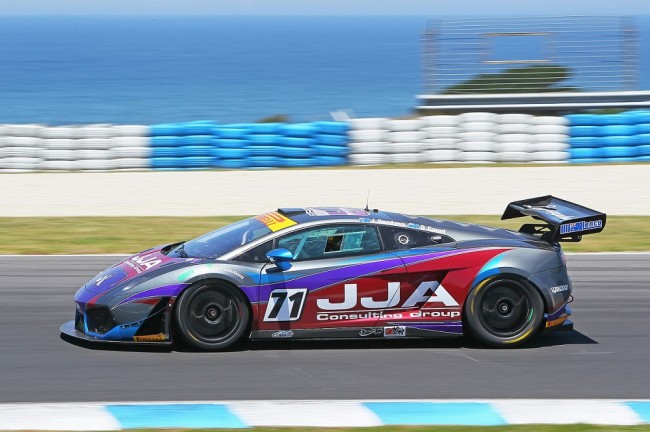 Q: Is the current level of popularity adequate enough compared to V8SC to attract sponsors and keep the costs low? Is the prize money enough in the end, or it all comes to sponsor money and private investment?
Q: Is the current level of popularity adequate enough compared to V8SC to attract sponsors and keep the costs low? Is the prize money enough in the end, or it all comes to sponsor money and private investment?
Jan Jinadasa: Ok, firstly there is no prize money, zero, so that doesn’t work. V8 do have prize money because they have better media rights deal and a media cost share scheme which are shared between the different teams. We don’t have anything like that but we are coming up in the ranks. The V8s generally have 24-26 cars on the grid, we have 45 cars. Our cars are faster and much more aerodynamic than the V8s. In this week-ends race, there are about 12 V8 drivers as co-drivers, so they are playing second fiddle to us this time, and in my class my lap times are better than at least 5 or 6 V8 drivers in the Qualifying sessions.
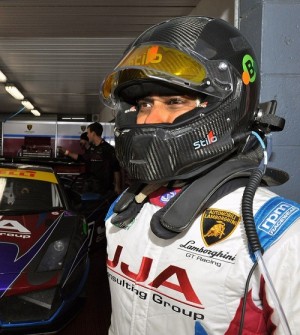 Q: Prior to Phillip Island 101 race, a talk has been held between the drivers and the Australian GT officials, about changing the format, similar to the European GT series, with a Sprint race and endurance races. Do you think this multiple format will attract more spectators?
Q: Prior to Phillip Island 101 race, a talk has been held between the drivers and the Australian GT officials, about changing the format, similar to the European GT series, with a Sprint race and endurance races. Do you think this multiple format will attract more spectators?
Jan Jinadasa: The GT’s will definitely get more spectators, I think they like the endurance races as they look at the race strategies that we play in pit-stops which can make or break the race, and that’s why Formula1 is so popular because one second extra in the pit can see you drop a number of places in the race. Clearly we are not in the same league as F1 or even V8SC’s. Most of our teams only have part time crew, we don’t race in between races nor are we classified as professional race car drivers. Whereas the V8s teams have full time crew of up to 70 people in the work shop, and they bring about 20-25 crew to the track. In my team (Team JJR), we have 6 crew. So even with this big difference in resources, we still like to convey a professional image at the race track. I believe that the true recognition and higher media presence is not too far away in this category. Stay tuned readers.
Q: About the possibility of some events, part of the Australian GT series, being held overseas – South-East Asia – from next year due to expanding the horizons of the sport, do you reckon the costs for attending these events far from your base, would make it impossible to participate in a full schedule?
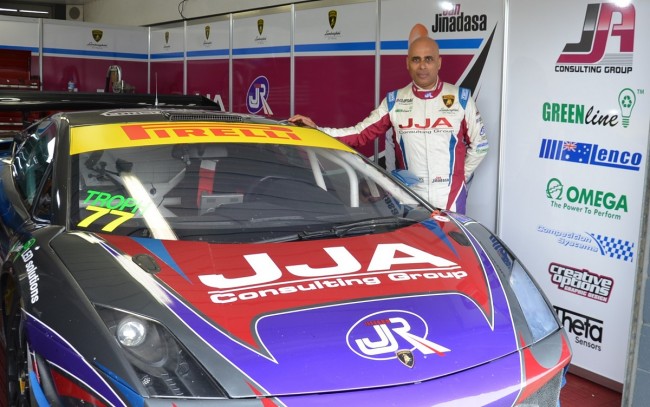 Jan Jinadasa: No it’s not probably an option for us (Team JJR), because majority of us are business owners, and this racing is a very expensive hobby for us, so unless you are in a position to leave work for that many times overseas, people are unlikely do it. I don’t think I will be able to do it, plus Australian GT is a separate series to what happens in Europe and in Asia. So if you want to take your car to Asia, yes you will be able to join that series.
Jan Jinadasa: No it’s not probably an option for us (Team JJR), because majority of us are business owners, and this racing is a very expensive hobby for us, so unless you are in a position to leave work for that many times overseas, people are unlikely do it. I don’t think I will be able to do it, plus Australian GT is a separate series to what happens in Europe and in Asia. So if you want to take your car to Asia, yes you will be able to join that series.
Q: So in that meeting, approximately how many teams, if any, have agreed to this kind of proposition?
Jan Jinadasa: I don’t know yet. It’s still being discussed. We be advised about it, probably another couple of months.
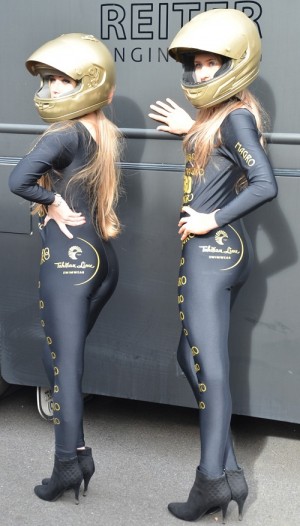 Q: In a series as this, with proper supercars, the likes of Lamborghini, McLaren, Ferrari, Mercedes, Porsche, while these cars are, a man’s dream to own or drive or even look and listen to… why you think the popularity is so low? Compared to V8SC, open wheel cars like Formula1, where the forms of the cars are unavailable to buy or drive to common people.
Q: In a series as this, with proper supercars, the likes of Lamborghini, McLaren, Ferrari, Mercedes, Porsche, while these cars are, a man’s dream to own or drive or even look and listen to… why you think the popularity is so low? Compared to V8SC, open wheel cars like Formula1, where the forms of the cars are unavailable to buy or drive to common people.
Jan Jinadasa: That’s a good question, I suspect its affordability. The other categories you mentioned are well beyond the reach of most people. I consider the GT’s are the next level down. People who are passionate about this sport have a number of choices. You can go racing in a number of different categories, but the current GT series – with the Porsches, Lamborghinis, Mercedes, Ferraris, etc. – is a sexy event, it’s a sexy series. Racing with a numerous marques for super cars on the same race track at the same time is mind blowing and you can feel the sense of achievement in doing this. Where in the other hand, V8’s are predominantly Holden’s & Ford’s.
Q: This series is similar to World Endurance Championship which is more known around the world, with the famous race of Lemans 24 taking place in less than a month. So endurance is the probably of the highest value in this series. Do you reckon that this is a factor keeping away the majority of unreached spectators? Like most of them would be interested in a typical race of 1.5 to 2 hours and be done with it? What your suggestions would be in a chance to promote the sport and attract further sponsors and spectators?
Jan Jinadasa: That’s a difficult question, because I don’t know what the market actually dictates. There is certainly a market for endurance races, and if you look at the crowd there, clearly there is not as many as the V8 crowd, but people are getting towards the GTs nowadays. The maximum race that we have currently is 3 hours, but in Europe they got 6 hours and 12 hours and 24 hours, and the other race that we have is in Bathurst which is a 12hour race which is not part of the GT series. They are talking about a 24hour race but that’s a different category to what we are doing. There are a lot of these cars that do compete it the 12hour race; in fact it’s about 70-80% are now GT cars. So it’s very popular, it is marketed well, it gets live TV coverage and the NSW Government also sponsors & promotes it really well in the media. When a local or state government gets involved with such a world class event, the sport gets the well needed injection of exposure and subsequent private sponsorship.
– Or maybe some tracks that actually are inside the city streets, would help.
Well, that’s where the Formula1 track comes in Albert Park.
– But you didn’t participate as a series.
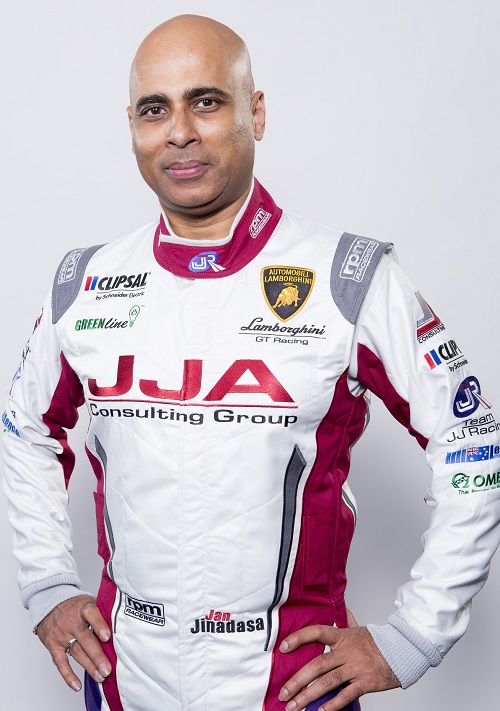 Jan Jinadasa: I don’t like road circuits for endurance races, because often they are too narrow which makes it a little dangerous. The Adelaide circuit or the Townsville circuit, or any other road circuit we race in, are just too short and it’s not very enjoyable when you have a too many 1st and 2nd gear corners. I don’t think too many drivers enjoy it as it’s a lot of hard work. It is a lot more rewarding to race on long, fast flowing tracks which are ideal for endurance races.
Jan Jinadasa: I don’t like road circuits for endurance races, because often they are too narrow which makes it a little dangerous. The Adelaide circuit or the Townsville circuit, or any other road circuit we race in, are just too short and it’s not very enjoyable when you have a too many 1st and 2nd gear corners. I don’t think too many drivers enjoy it as it’s a lot of hard work. It is a lot more rewarding to race on long, fast flowing tracks which are ideal for endurance races.
Q: But some tracks that are like Phillip Island are actually maybe too far for some spectators to attend the track.
Jan Jinadasa: Yes, that is correct. So therefore, only the real genuine, car racing enthusiasts often will attend these. Keep in mind that people travel across different countries in Europe to attend race meetings, so travelling 140 km from Melbourne is not really a big deal. At the same time, when Phillip Island race track hosts the Superbikes races, the whole place is packed. It is promoted well, and promoted as a sexy event. I think people will come down, no question about it. The event we are doing this week-end is part of the ‘Shannons National’ round. It doesn’t have the same glamour or the media presence as a V8 round but it’s still popular among the die hards.
– So further promotion needs to be done by someone, officials…
Jan Jinadasa: That’s right; high ranking officials need to get involved with the series. Because GT’s are on the way up, and especially the V8 crowds are slowly moving away from the V8s because they are bored with the V8s, and also may be their politics. I think the public are now starting to look at something a bit more exciting, a bit more sexy, a bit more exotic, so the only category that meet this demand are the GT’s.
Και επειδή στο F1fan.gr ποτέ δεν συμβιβαζόμαστε και θέλουμε πάντα να προχωράμε μπροστά, μπορείς να μας ακολουθήσεις στο Facebook, και στο Instagram, όπως επίσης και να γραφτείς στο εβδομαδιαίο Newsletter μας!








